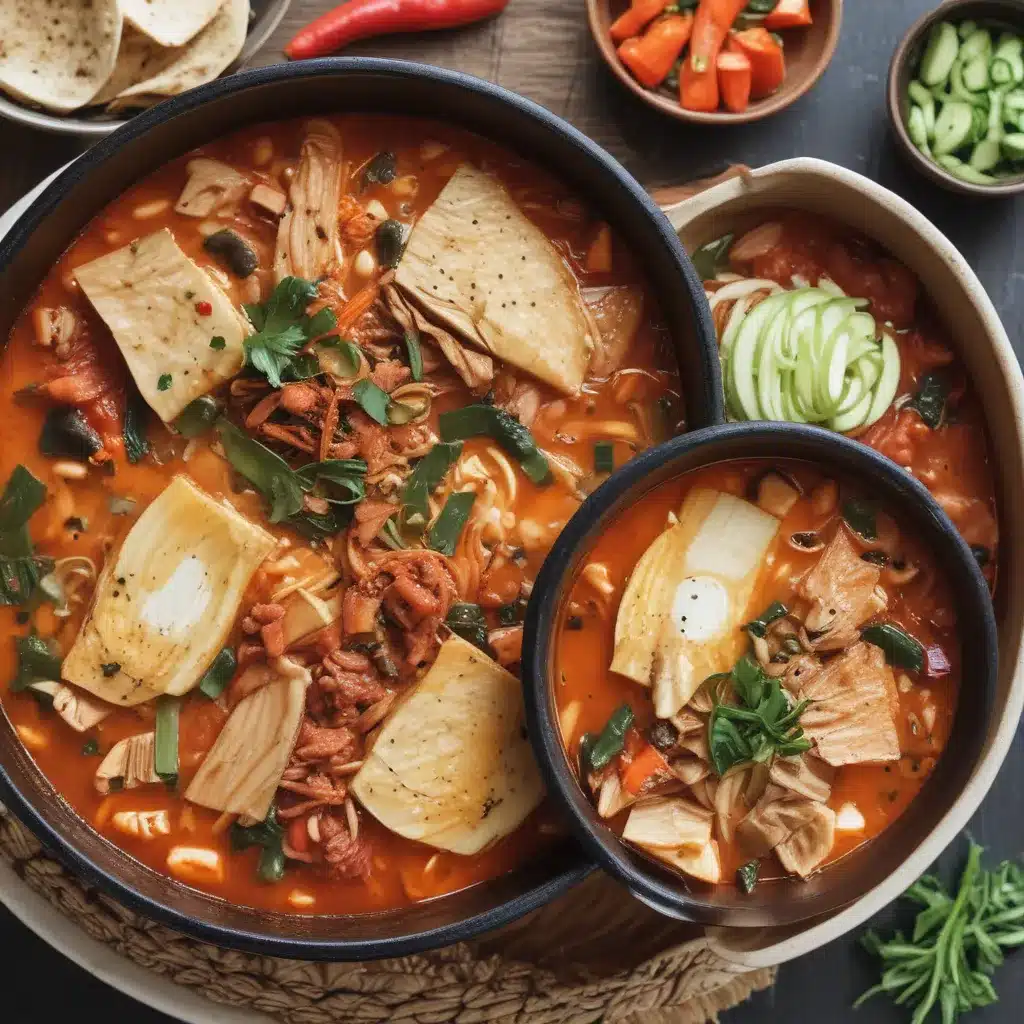
A Warm Hug in a Bowl
Growing up in Korea, I have the fondest memories of gathering around the table with my family, each of us hunched over a steaming bowl of kimchi jjigae. The aroma of fermented cabbage, the sizzle of pork, and the occasional burst of fiery gochugaru would fill the air, signaling the start of a comforting meal.
Kimchi jjigae, or spicy Korean kimchi stew, is the dish that warms the soul and brings people together. It’s a dish that’s deeply ingrained in Korean culture, a reflection of the country’s love for bold, dynamic flavors. And let me tell you, there’s nothing quite like it.
The Perfect Pairing
As a child, I always marveled at the way the pungent kimchi and the savory pork belly came together in perfect harmony. The tender, fatty pork would soak up all the spicy, tangy goodness of the kimchi, creating a flavor explosion in every bite. And let’s not forget the rice – the perfect companion to soak up every last drop of that delicious broth.
Maangchi, the queen of Korean home cooking, sums it up best: “Kimchi stew is thicker than kimchi soup. Kimchi soup is less salty than kimchi stew. Also, soup is always served in individual bowls, with rice. Traditionally in Korean cuisine stews were served in a big pot on the table, and the family would eat communally from the pot.”
A Tale of Two Brews
Now, when it comes to the broth, there are a few options to consider. The traditional route, as Maangchi describes, is to use a simple anchovy and kelp stock as the base. This creates a rich, savory foundation that allows the flavor of the kimchi to shine.
Korean Bapsang also suggests using the “water used to rinse rice (ssalddeumul, 쌀뜨물)” as the stew base. This rice water thickens the broth slightly and enhances the overall flavor.
But if you’re in a hurry or prefer a more straightforward approach, you can simply use water or even chicken or vegetable broth as the base. The key is to let the stew simmer for a while, allowing the flavors to meld and develop.
The Art of Customization
One of the best things about kimchi jjigae is its versatility. While the traditional version features pork belly, you can easily swap it out for other proteins like beef, chicken, or even canned tuna. Chef Chris Cho suggests that “Depending on your diet and your preference, you can make Pork Kimchi Jjigae, Tuna Kimchi Jjigae, or Mackerel Kimchi Jjigae.”
And let’s not forget the tofu. Whether you prefer it soft and silky or firm and chunky, tofu is a fantastic addition that adds both nutrition and texture to the stew.
A Spicy Culinary Adventure
Of course, no discussion of kimchi jjigae would be complete without addressing the elephant in the room: the heat. This stew is not for the faint of heart, but for those of us who embrace the fire, it’s a culinary adventure worth embarking on.
The key to taming the heat is to use the right amount of gochugaru (Korean red pepper flakes) and gochujang (Korean red pepper paste). Start with a small amount, taste, and adjust to your preference. And don’t forget to have a tall glass of water (or a cold beer) nearby to extinguish the flames.
A Stew for All Seasons
Whether you’re seeking comfort on a chilly winter day or craving a taste of Korea on a sunny summer afternoon, kimchi jjigae is the dish that can do it all. It’s a versatile stew that can be enjoyed year-round, making it a staple in Korean households and a must-try for anyone exploring the vibrant flavors of Korean cuisine.
So, the next time you’re in the mood for a spicy, savory, and utterly satisfying meal, head to your nearest Korean restaurant in Boston and order a steaming hot bowl of kimchi jjigae. Trust me, it’s a culinary experience you won’t soon forget.
